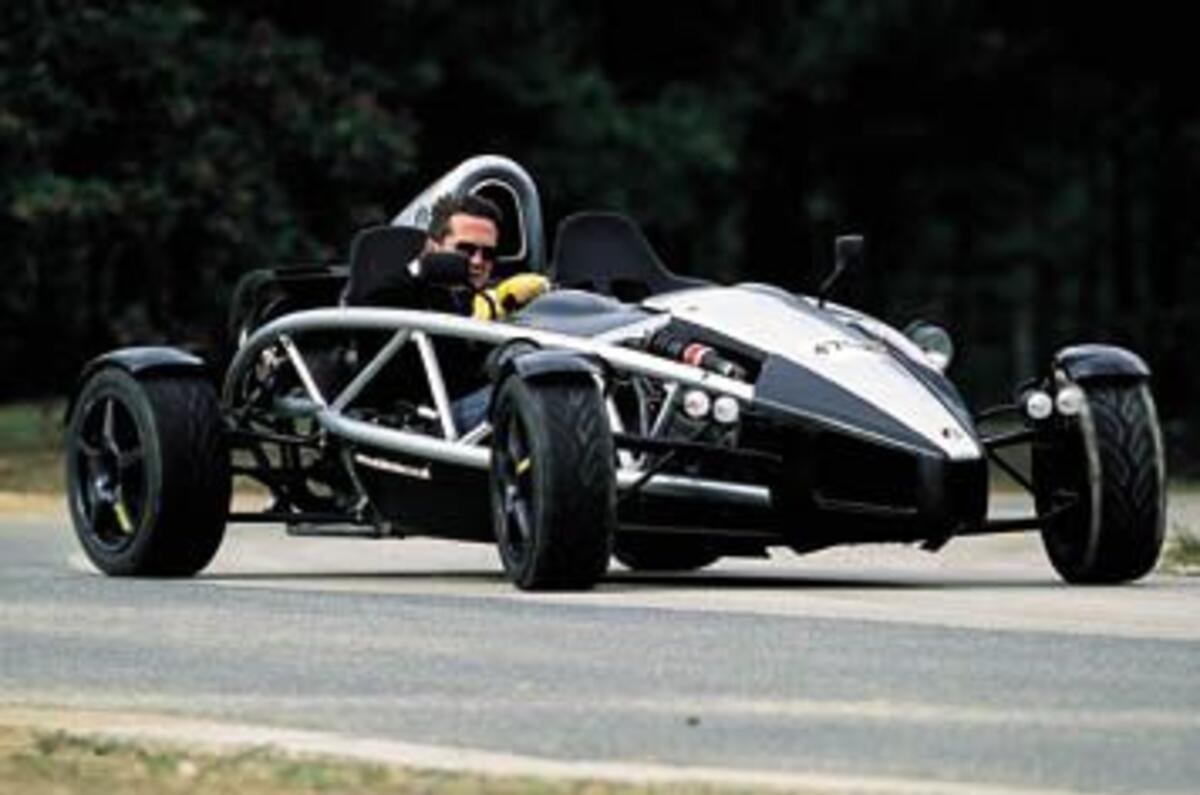Jackson Racing has been tuning Hondas in California for 23 years, and is best known in the American import drag-racing scene for its excellent and well-proven superchargers. So when Ariel boss Simon Saunders was looking for ways to make his 220bhp Honda Type-R-engined Atom track car go even faster, he headed to the US West Coast for talks. The result is this new supercharged Atom, with a full 300bhp at 8200rpm, and torque up from 144lb ft at 6100rpm to 191lb ft at 7150rpm. It weighs 460kg with no fuel on board.
The Jackson blower runs at low boost, so engine internals can safely remain unmodified, but the extra urge is instantly noticeable from low down in the rev range. Nothing else about the car is changed, other than the ECU, created by another Californian outfit called Hondata. The new brain manages the fuelling by using all of the Honda ECU’s intelligence and adding a lot more adjustability. There is no lag, just a hit of useable torque, which is very pleasing when combined with the i-VTEC’s natural revviness. But that’s enough data: what you really want to know, considering a power-to-weight ratio of 657bhp per tonne, is ‘how does she go’?
Hmm. How to describe this car’s acceleration? Well, you’re effectively entering a Spirit World. It’s more than a parallel universe you didn’t know existed: it’s an entirely human-created land, an almost religious place which at first shocks you into muted fear, but after time draws you in and traps you. Accelerate hard through all six gears in this car, experience its crushing force, and you start to visualise a tribal dance, with natives heaving around a blazing fire, screaming a banshee scream – and one super-large native is wearing a leering black full-face mask with the Ariel ‘A’ branded onto the forehead in luminescent blood.
Overstatement? No. The scream of the supercharger is as other-worldly as the terrible rush. The muted nature of your initial gulping fear is real: a theme park ride called The Tower of Terror I once made the mistake of not avoiding is strangely quiet for the same reason. It drops its occupants straight down 20 stories and most are simply too frightened to scream. You just hear the thing running down its rails, with the poor humans flailing around in silence. That happens the first time you experience this car at full noise – you gulp. Then, once you come off the loud pedal and realise you haven’t been killed, you start laughing. It’s relief more than anything.
Deputy road test editor Alastair Clements complained of sore hands and wrists after six acceleration runs in the car. He was holding on too tight. And I can understand why. Al hadn’t driven it properly before, and though he has a lot of experience in the standard Atom, the task of extracting quick figures from this thing wasn’t one to be trifled with.
The intensity of the drive is amplified by the position you sit in. This car is unique in that you’re not only exposed to the wind blast, thanks to the lack of a screen, you’re unprotected on the sides as well. It gives you a connection with the road you can only beat on a motorbike.
It’s superbike fast, too. But – and this is the critical ‘but’ – the more you use it, the more you get used to it. In three dry days with the car – no point in taking it out in the wet on Yokohama Advan cut slicks – I didn’t actually get used to it completely, but I was able to at least consider what was going on. Modulate the wheelspin in the first three gears. Think about gearchanges and shift points. Start to balance the car on the throttle, which is a lot snappier in action than the normally aspirated version. And enjoy the chassis, which is easy to direct and very communicative, with steering as alive and informative as any in creation. Starting to manage the car’s power and finding the limit of the Yokos was a satisfying development, and justifies the expense of the supercharger.


















Add your comment